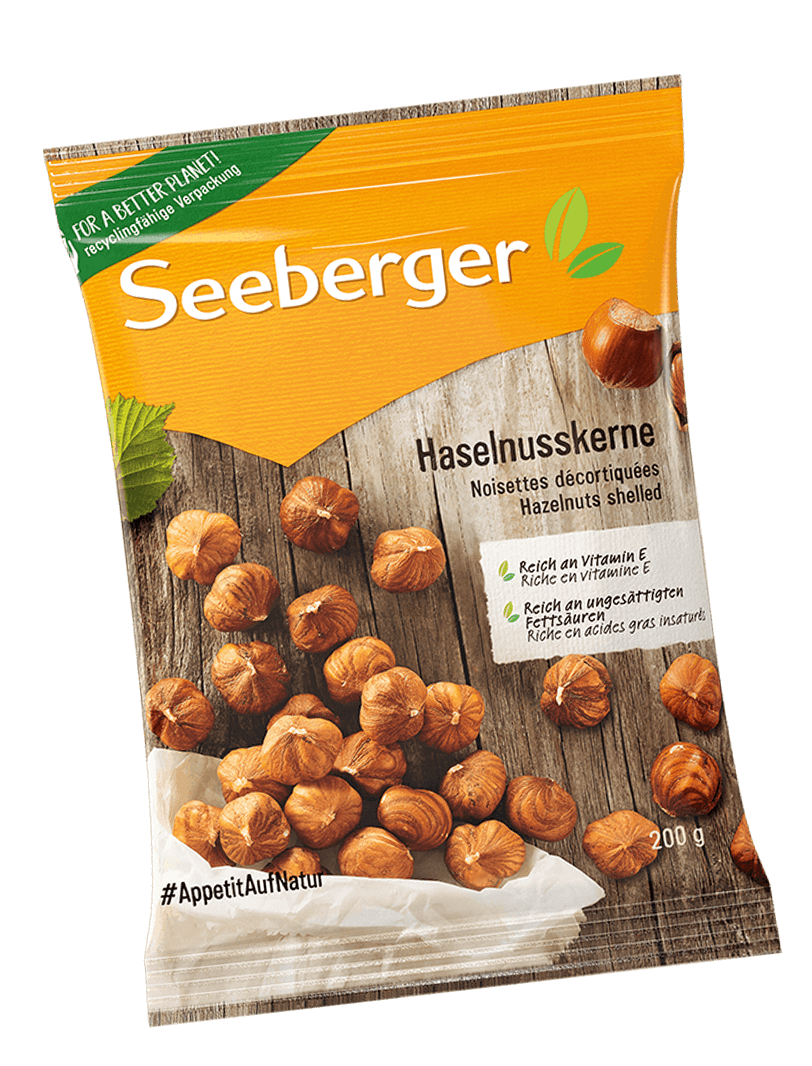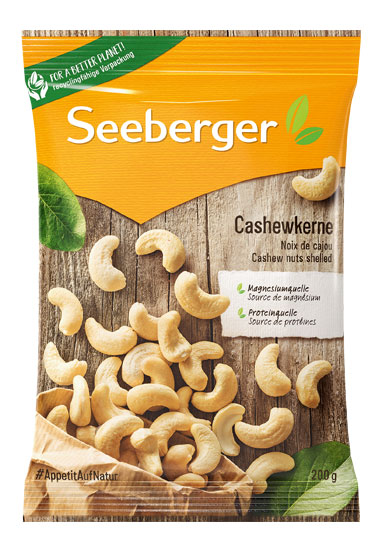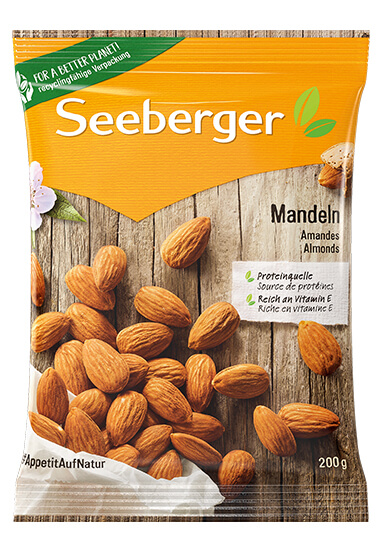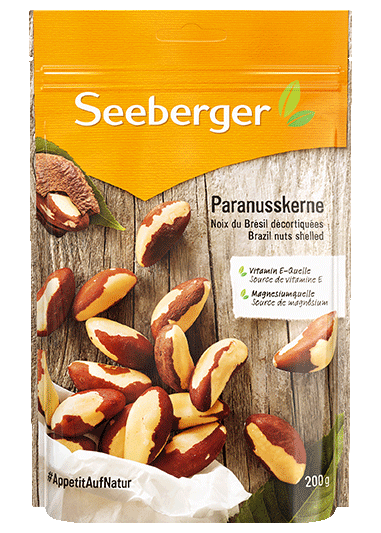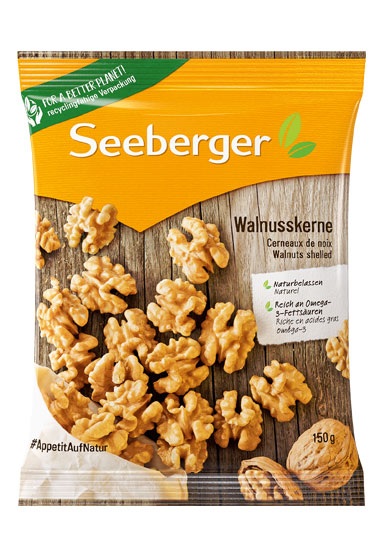Hazelnuts
Product information
Our Seeberger hazelnuts travel a rather short route compared to some of the other nuts in our range: the origin of the “Round Roman” variety we use is clear in the name. The crunchy nuts are an essential element in many cakes, biscuits and sweet dishes and are also a good choice for snacking.
Ingredients
Hazelnuts
Nutrition Statement
Rich in monounsaturated fatty acids, rich in vitamin E
This product is
- vegetarian
- vegan
- glutenfree*
- lactosefree*
- no added sugar**
- no added salt***
Nutrition facts
(per 100g)
- Calories (kj/kcal) 2.781 kj/674 kcal
- Fat 63 g
- of which saturated fatty acids 5,3 g
- Carbohydrate 6,0 g
- of which sugar ** 3,9 g
- Protein 16 g
- Salt *** <0,01 g
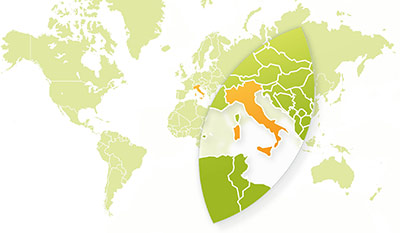
Country of origin: Italy
Following the last ice age about 10,000 years ago, the hazelnut began to spread widely throughout northern Europe. In 1865 it was brought to North America. Today, hazelnuts are grown commercially around the 45th parallel and further south. The large cultivation areas are mostly near the sea, where the winters are mild and the summers not too hot. At Seeberger, we source our hazelnuts from Italy, more specifically from the growing regions of Piedmont, Rome and Naples. We source the Ronda Gentile Romana variety, also called “round Romans,” from Rome (as the name suggests). We put these nuts into our nut mixtures, for example. From Piedmont we obtain the Tonda Gentile Trilobata variety, which are wonderful for roasting because the nuts can be blanched easily. This variety is processed into our roasted hazelnut kernels.
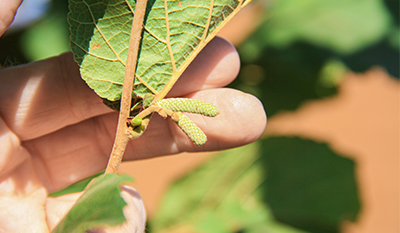
Growing the hazelnuts
Hazel blooms in mid-winter – that is, in January and February. Since it is still much too cold for bees at this time, the pollen is wind-borne. The hazel bush bears male flowers, or hazel catkins, and female flowers, which are buds with crimson filaments that gather in the seed. The female flowers, however, are sterile to their own plant, which makes cross-pollination by other plants necessary. Following the pollination, the actual fertilization is suspended until the warmer months arrive (April to June). Only above 20 degrees Celsius can a mature egg cell form and fertilization take place.
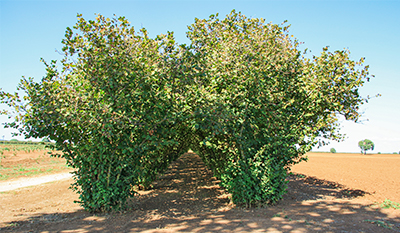
The hazelnut bush
Hazelnut bushes grow to about 5 meters in height and live for around 80 years. The nuts can usually be harvested from the tenth year on. The hazelnut kernels never grow individually, but always in bunches.
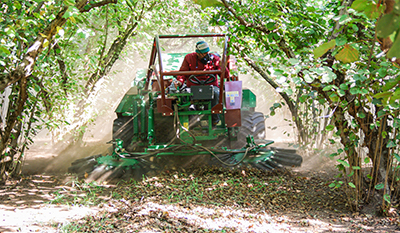
The hazelnut harvest
Hazelnuts are harvested between September and October. As a general rule, plantations are harvested twice at intervals of two to three weeks during this time.
In preparation, the ground is first cleaned and cleared of vegetation. The hazelnuts are then gently shaken from the trees with special machines, without damaging the trees. To save the individual nuts from having to be picked up by hand, a sweeper machine gathers them up. While being gathered up, the nuts are also shaken free from loose branches and leaves by blowers.
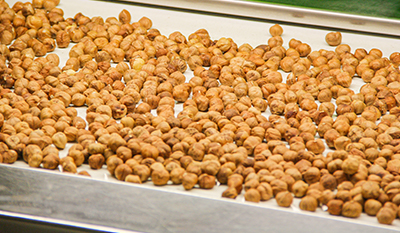
Processing the nuts
First, the nuts are sifted by blowing air in the factory and cleaned in water channels. They are then dried in large silos, which preserves them for the long term. This usually takes one to two days. The next step sorts the nuts by size in rotating drums or on vibrating screens. The nuts are cracked just before loading, by being passed between two rotating steel rollers.
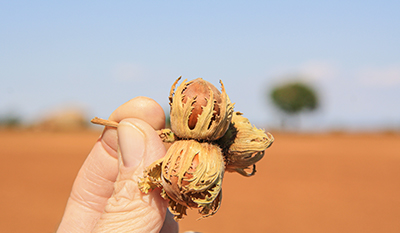
Quality characteristics
What marks the special quality of the nuts, and of the Round Romans above all, is a size of at least 14 mm. Our hazelnuts are also particularly crunchy and aromatic. The blanched hazelnuts that we use to produce roasted hazelnut kernels are particularly tasty, and here too we look for a size between 13 and 15 mm. To guarantee this quality, the supplier inspects the nuts immediately upon delivery. Samples are taken and, after cracking and slicing, divided into different classes.
Quality control in Ulm
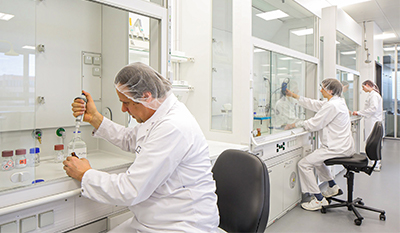
Quality control in Ulm
We also test quality at our Ulm facility through our in-house food chemistry laboratory. We cut the hazelnuts open and, in addition to taste, size and shape, check the interior of the nut, among other things. If the quality meets our standards, we pack the hazelnut or use it for various mixtures, such as trail mix, nut kernel mix or Nuts 'n' Berries.
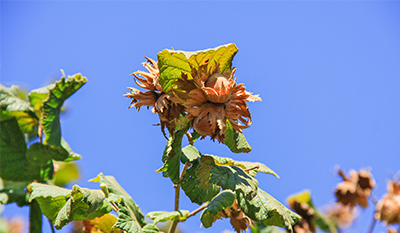
Partnership
Partnership relationships and mutual trust are our top priority. This is reflected in the cooperation we have maintained with our partners, in some cases for decades. For us, partnerships also mean sustainability. Our focus on the long term gives our partners a certain degree of planning security, which also has a positive effect on job security. Good relationships mean a lot to us.
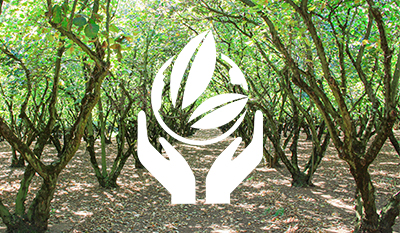
Sustainability from the start
We are not the only ones paying attention to sustainable action; our partners right at the place where the nuts grow are also doing their best to protect nature. One particularly positive feature is the utilization of the hazelnut shells. These are not simply disposed of, but are sensibly recycled into fuel for heating systems – similar to what we know as pellets. Recycling them can reduce waste and make a valuable contribution to the environment.
To irrigate the hazelnut trees, water is drawn from the surrounding wells and fed to the trees drop by drop. This precision drip irrigation has proven a very useful tool in delivering just the amounts of water and nutrients that the trees need. This system also virtually eliminates wasted water. Timed irrigation with a controlled water supply during all the phenological phases (the life cycle events) allows the weight of hazelnuts to be increased and empty shells to be reduced. A precise irrigation and fertilization system is therefore key to improving quality and achieving satisfactory production.
 Hazelnuts: healthy and crunchy | Seeberger GmbH
Hazelnuts: healthy and crunchy | Seeberger GmbH
